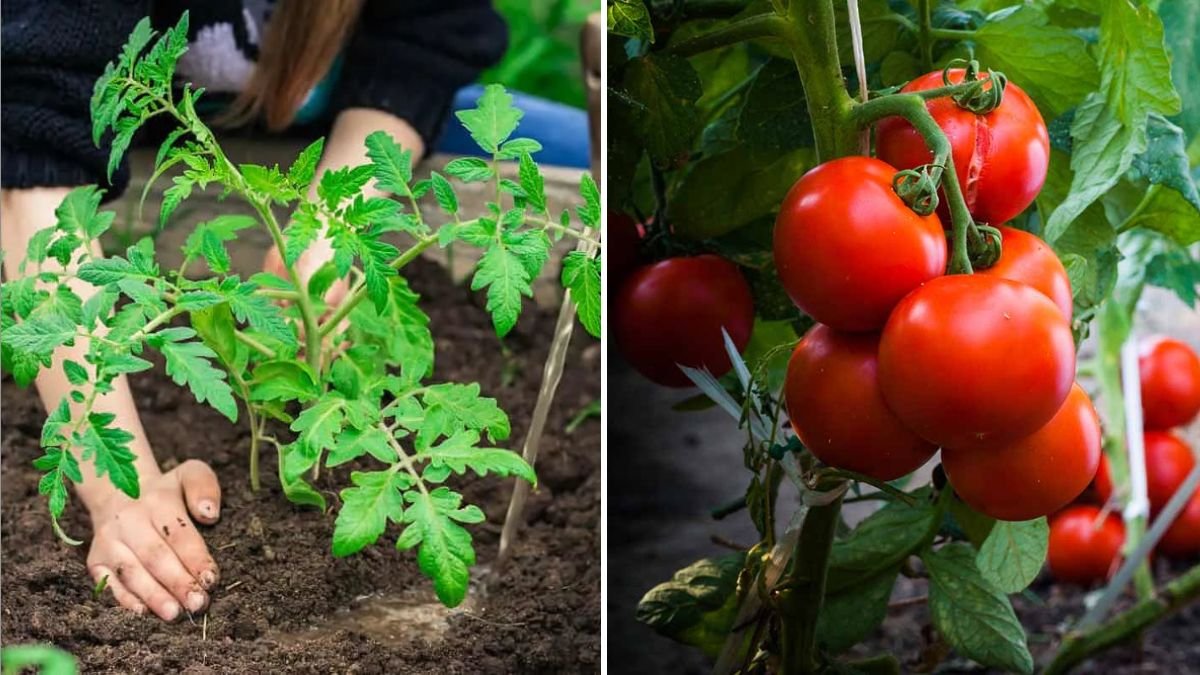Few gardening joys compare to plucking a sun-warmed, vine-ripened tomato straight from your garden. But if you’ve ever struggled with slow growth, low yields, or late harvests, you’re not alone. Whether you’re a beginner gardener in Florida or an experienced grower in California, every tomato lover wants the same thing—fast-growing, high-yield plants that deliver juicy fruits early and abundantly.
The good news? You don’t need a greenhouse or fancy fertilizers to make it happen. With a few smart growing techniques, the right soil balance, and timely care, you can enjoy basketfuls of homegrown tomatoes weeks earlier than most gardeners.
This complete guide breaks down how to grow high-yield tomatoes at home, using simple, science-backed tips tailored for the American home gardener—from seed selection to harvest.
1. Start With the Right Tomato Varieties
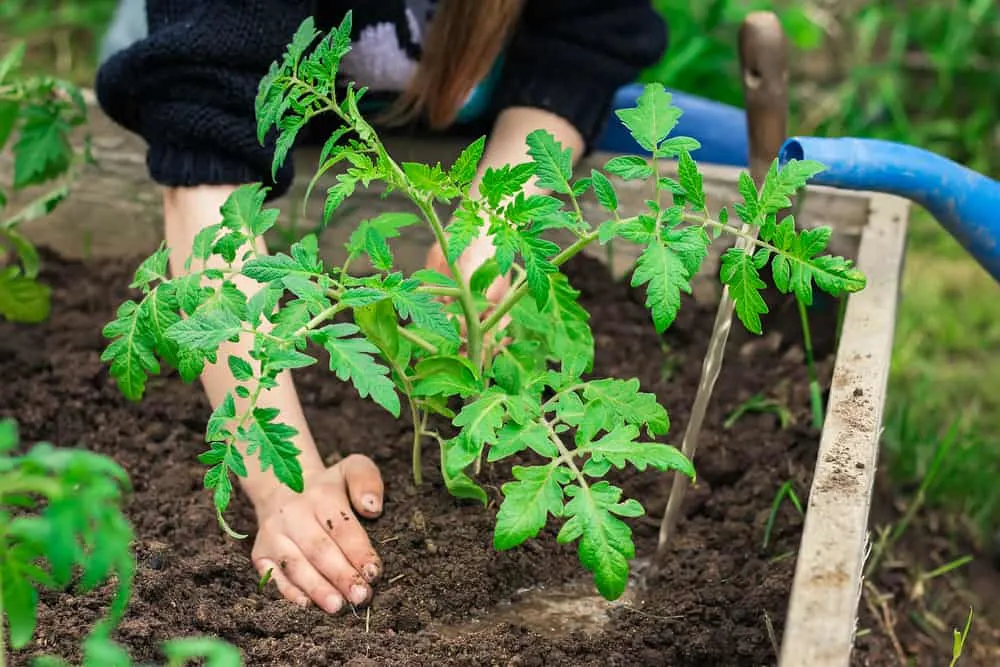
Not all tomatoes grow the same. To ensure fast growth and early harvest, choosing the right variety is crucial.
Best Quick-Growing & High-Yield Varieties for the U.S.:
- Early Girl: One of America’s favorite early producers. Fruits ripen in just 50 days and deliver consistent harvests all summer.
- Bush Early Wonder: Compact, perfect for containers and small gardens, with harvests in under 60 days.
- Celebrity: Disease-resistant and high-yielding—a reliable choice for steady production.
- Roma VF: Great for sauces, thick-skinned, and productive.
- Sungold Cherry: Sweet, bite-sized fruits that appear early and keep coming.
Pro Tip: If you live in colder northern states, opt for “determinate” or “early maturing” types. Southern gardeners can go for “indeterminate” varieties that fruit continuously through warm months.
2. Choose the Perfect Spot: Sunlight Is Everything
Tomatoes are sun worshippers. To maximize yield and speed, they need 6–8 hours of direct sunlight daily.
Location Tips:
- South-facing gardens or patios get the strongest sun exposure in the U.S.
- If growing indoors or on balconies, use LED grow lights to supplement light.
- Keep them away from large trees or fences that block sunlight.
Remember: More sunlight = faster growth and sweeter fruit.
3. Prepare Nutrient-Rich, Well-Drained Soil
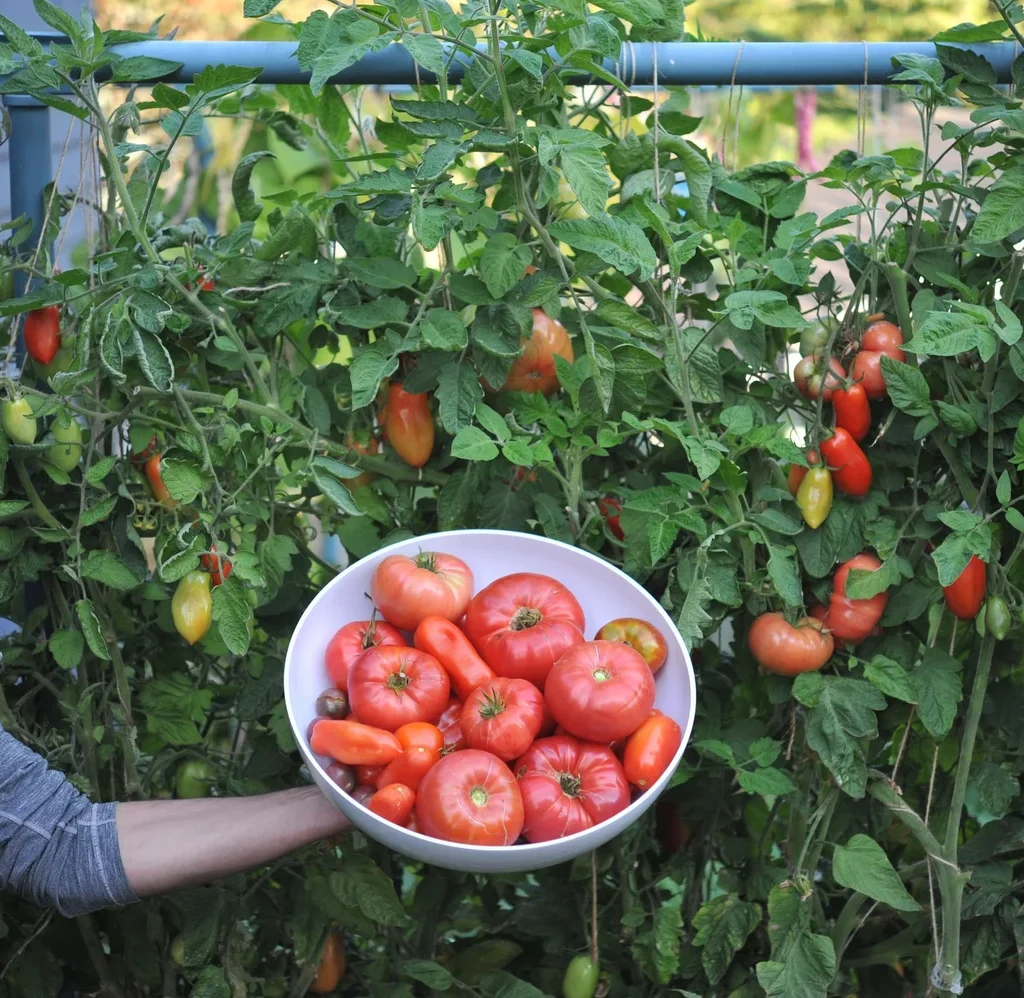
Tomatoes are heavy feeders, meaning they need nutrient-dense soil to produce high yields. Start by enriching your soil with organic compost, worm castings, and bone meal.
Ideal Soil Mix:
- 40% garden soil
- 40% organic compost
- 20% perlite or coco peat (for drainage)
Soil pH: Keep it between 6.0 and 6.8—slightly acidic conditions help tomatoes absorb nutrients efficiently.
If you’re growing in containers, choose 5-gallon pots or larger, as roots need space to spread deep and strong.
4. Seed Starting Secrets for Quick Growth
Starting tomatoes from seeds? A little care early on pays off later.
Germination Steps:
- Start seeds 6–8 weeks before your region’s last frost date.
- Sow seeds ¼ inch deep in seed trays filled with a light seed-starting mix.
- Keep trays in a warm spot (around 75–80°F).
- Cover with plastic wrap until sprouts appear (usually 5–10 days).
Once seedlings grow two sets of true leaves, transplant them into small pots to strengthen roots.
Bonus Tip: Brush your fingers gently over seedlings daily—this mimics outdoor wind and builds stronger stems.
5. Transplanting for Maximum Growth
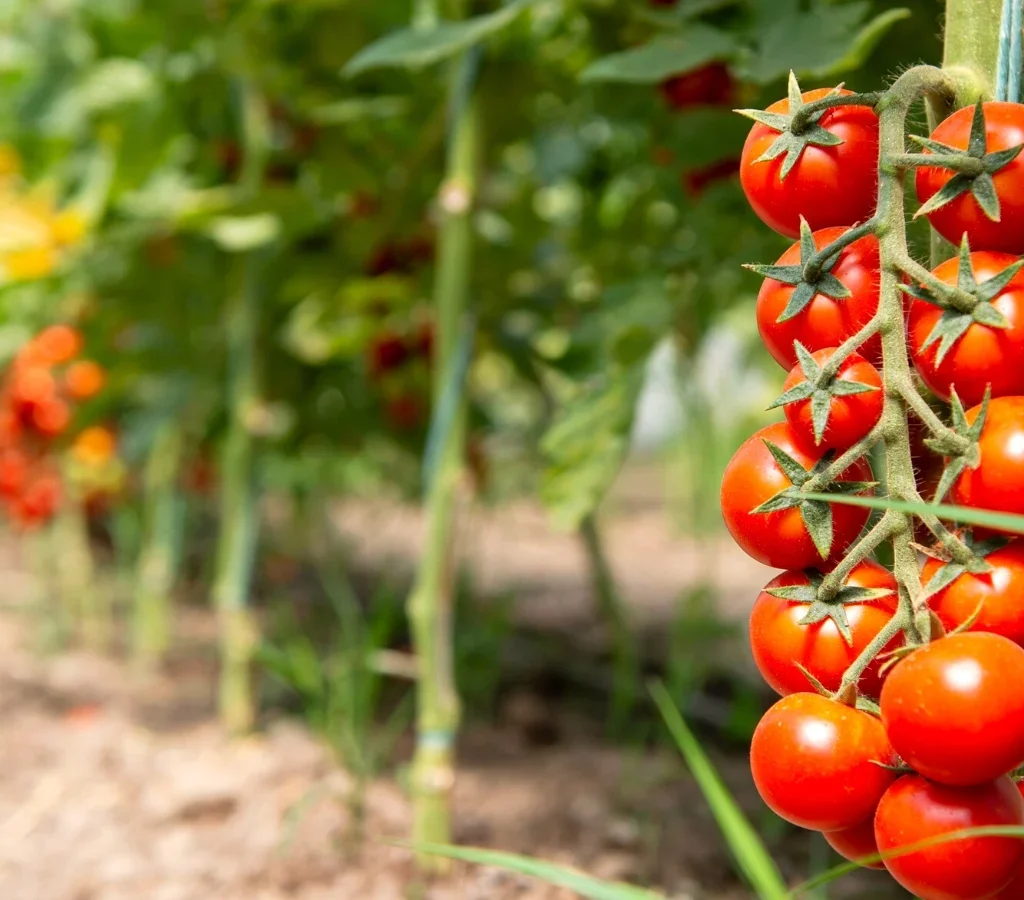
When your seedlings reach 6–8 inches tall, it’s time to transplant them outdoors.
Timing:
Wait until nighttime temperatures stay above 55°F. Tomatoes hate cold weather.
How to Transplant:
- Dig a deep hole—bury two-thirds of the plant (including part of the stem).
- The buried stem will grow new roots, making your plant stronger and more productive.
- Add a handful of compost and crushed eggshells to the hole for slow-release calcium.
Water immediately after transplanting to help the roots settle in.
6. Watering Wisely: The Key to Juicy Tomatoes
Tomatoes love moisture but hate soggy roots. Inconsistent watering is the top reason for problems like cracked fruit or blossom-end rot.
Watering Rules:
- Water deeply, not frequently—about 1–1.5 inches per week.
- Early morning watering is ideal.
- Avoid overhead watering; use a drip irrigation system or water at the base.
Pro Tip: Mulch around your plants with straw or shredded leaves to lock in soil moisture and keep roots cool during hot summer days.
7. Feeding for Bigger Yields
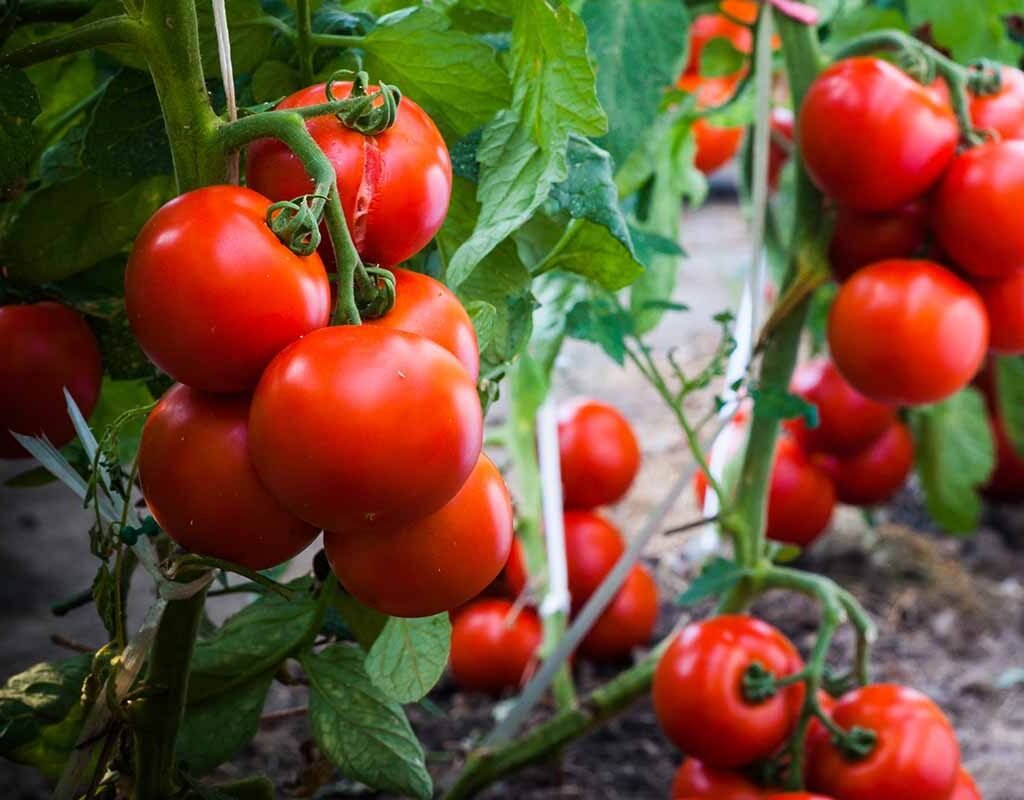
For high-yield tomato gardening, consistent feeding makes all the difference.
Natural Fertilizer Routine:
- At planting: Mix in compost and bone meal.
- After 2 weeks: Feed with a balanced fertilizer (10-10-10).
- During flowering: Switch to a potassium-rich fertilizer to boost fruiting.
Organic boosters: Fish emulsion, compost tea, and banana peel fertilizer are excellent natural choices that improve flavor and yield.
Avoid high-nitrogen fertilizers—they promote leafy growth but delay fruit production.
8. Pruning and Support: Help Your Tomatoes Reach for the Sky
Pruning may sound optional, but it’s essential for early, abundant harvests.
Pruning Tips:
- Remove the lower leaves that touch the soil—this prevents disease.
- Pinch off suckers (small shoots between the main stem and leaf branch) to channel energy into fruiting.
- Use stakes, cages, or trellises for vertical support. This keeps air circulating and prevents overcrowding.
A well-supported tomato plant is healthier, cleaner, and produces more fruit.
9. Pest and Disease Protection—Naturally
Even the healthiest tomato gardens attract pests. But with a few natural tricks, you can keep your plants safe without chemicals.
Common Tomato Pests in the U.S.:
- Aphids: Spray with neem oil or insecticidal soap.
- Hornworms: Handpick them early morning.
- Whiteflies: Use sticky traps or introduce beneficial insects like ladybugs.
Disease Prevention Tips:
- Rotate crops yearly—don’t plant tomatoes in the same spot two years in a row.
- Avoid watering leaves to prevent fungal infections.
- Spray a homemade fungicide:
- 1 tablespoon baking soda
- 1 teaspoon mild soap
- 1 gallon water
Spray every two weeks to keep powdery mildew and blight away.
10. Speed Up the Harvest—Early Fruiting Tricks
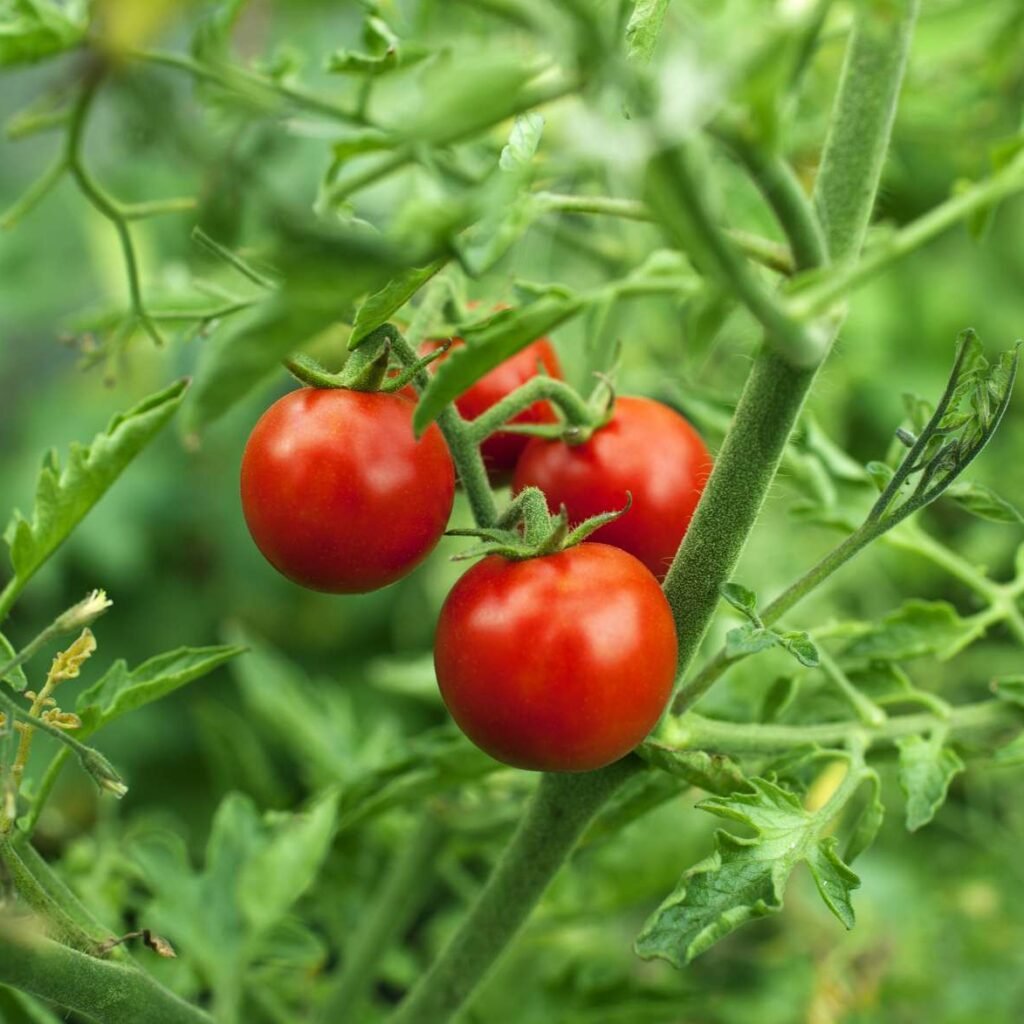
Want your tomatoes to ripen earlier than your neighbors’? Try these quick-growth hacks:
Pinch early flowers: For young plants, remove the first few blooms. This encourages stronger root and stem development before fruiting.
Boost warmth: Cover plants with black plastic mulch to warm the soil faster in early spring.
Epsom salt boost: Add 1 tablespoon Epsom salt per gallon of water every two weeks. Magnesium helps fruits mature faster and taste sweeter.
Prune wisely: Remove unnecessary leaves to let more sunlight reach developing fruits.
With these tricks, you can enjoy your first ripe tomatoes up to 3 weeks earlier than average.
11. Harvesting the Right Way
Timing your harvest perfectly ensures the best flavor and nutrition.
When to Pick:
- Fruit is deep red (or orange/yellow for certain varieties).
- Skin is glossy and firm but slightly soft to touch.
- Green shoulders may still appear on some heirloom varieties—this is normal.
Gently twist the tomato from the vine or use scissors to avoid damaging the stem.
Storage Tip:
Keep ripe tomatoes at room temperature—not in the fridge—to preserve flavor and texture.
12. Extend the Season for Continuous Harvest
In many U.S. regions, you can extend your tomato season well beyond summer with a few smart strategies:
Greenhouse or hoop cover: Protects plants from early frost in northern states.
Container gardening: Move potted plants indoors during cold snaps.
Propagation: Take stem cuttings from healthy plants, root them in water, and replant for a late-season crop.
With proper care, you can enjoy homegrown tomatoes well into fall—or even year-round in southern states.
Conclusion: Turn Your Backyard into a Tomato Paradise
High-yield tomato gardening isn’t about luck—it’s about timing, technique, and consistency. By choosing the right varieties, feeding your soil, pruning wisely, and giving your plants the sunlight they crave, you’ll enjoy a bumper harvest of juicy, flavorful tomatoes faster than ever before.
Whether you’re growing on a sunny balcony in New York or a backyard plot in Texas, these quick-growth and early-harvest tips make it easy for any American gardener to turn simple tomato plants into a fruit-producing powerhouse.
So grab your gloves, pick your favorite seeds, and get ready to fill your kitchen with the sweet, homegrown taste of success—one tomato at a time.
